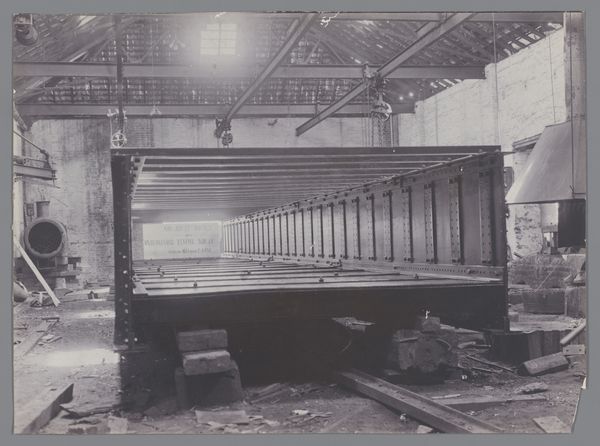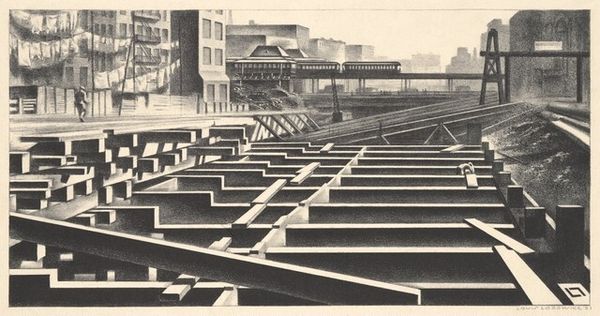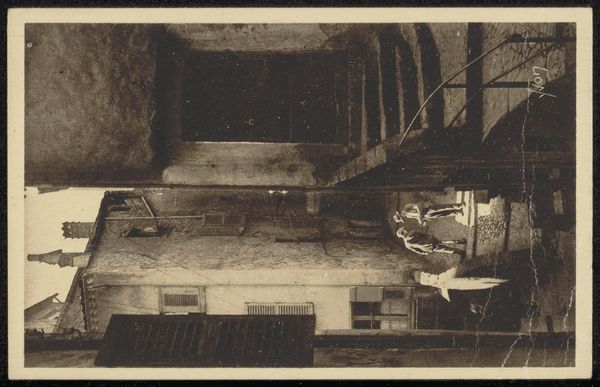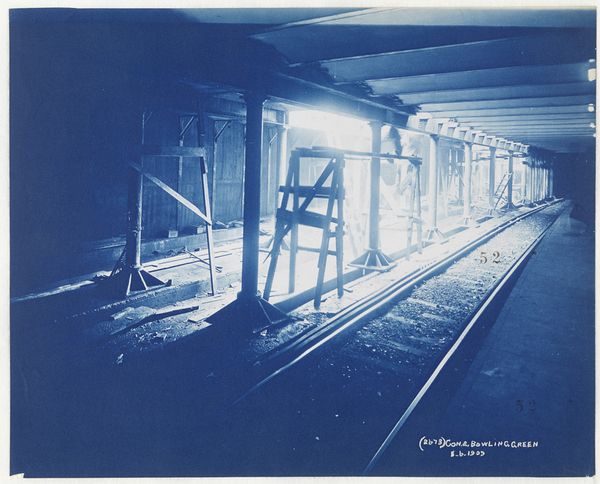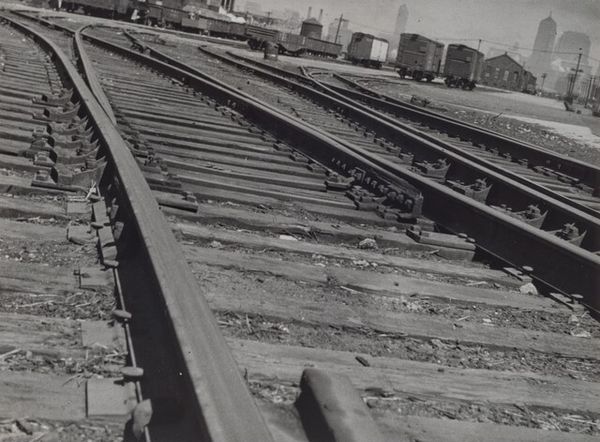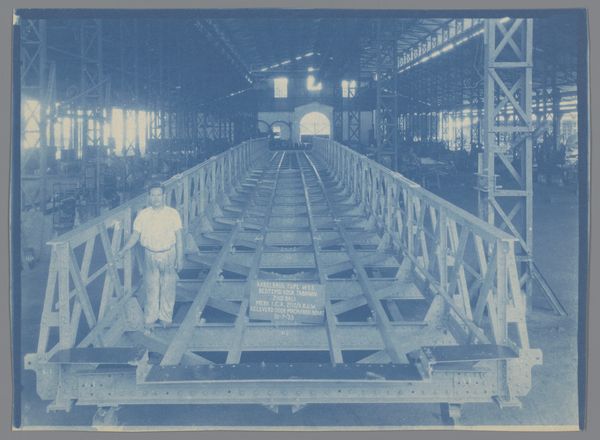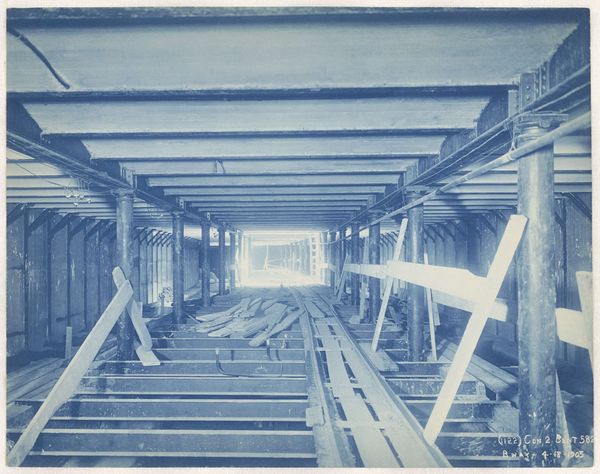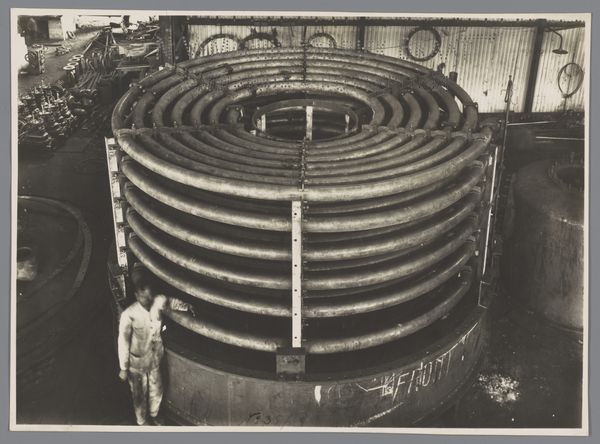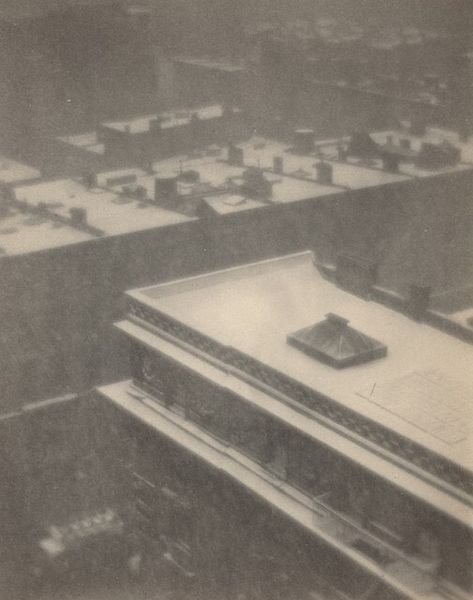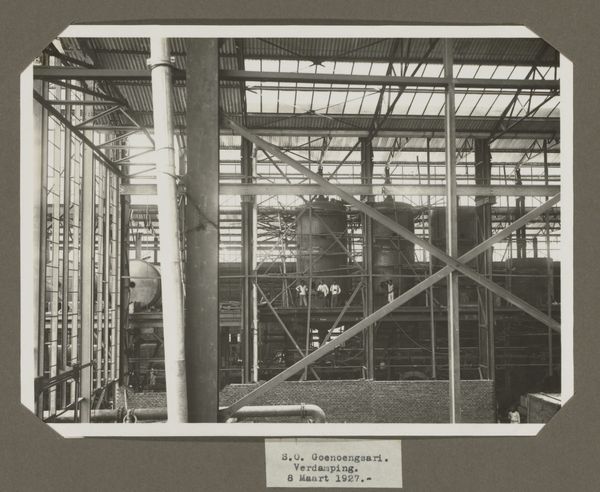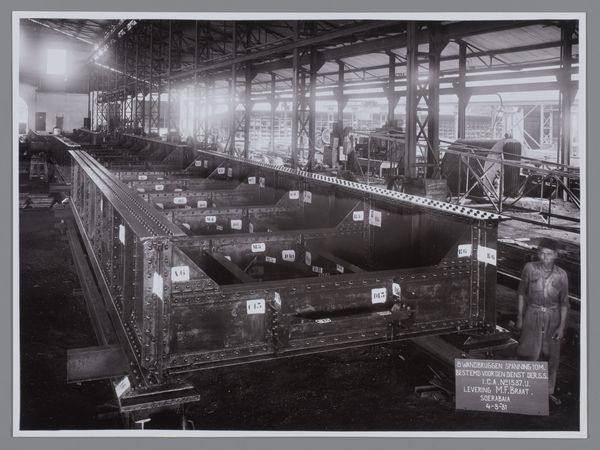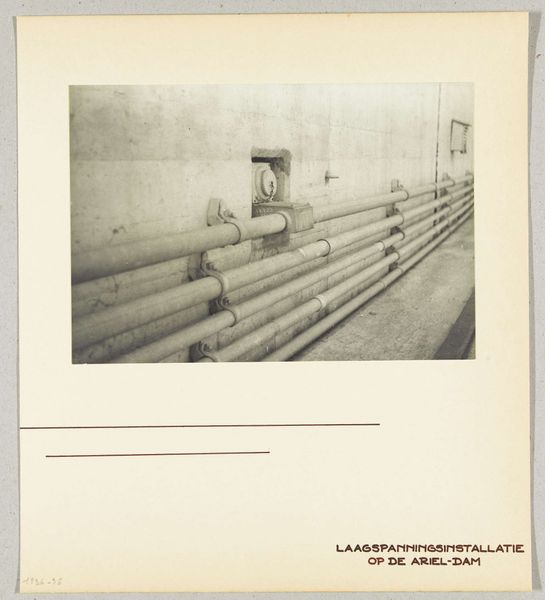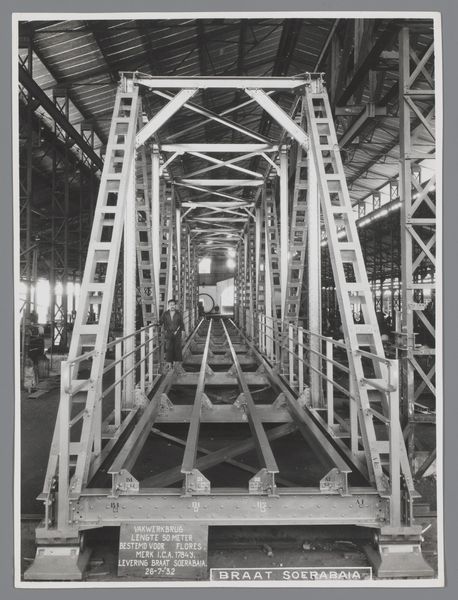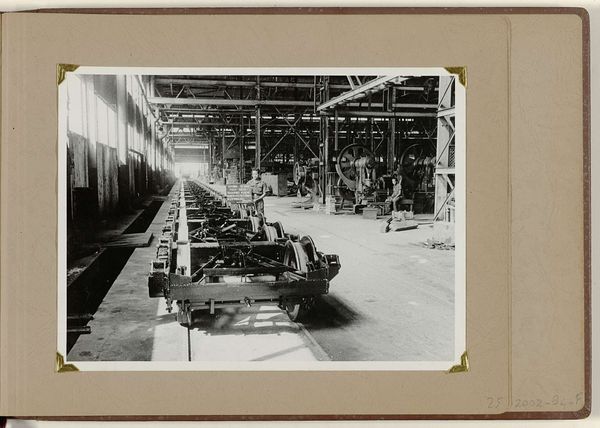
photography
#
sculpture
#
photography
#
geometric
#
line
#
cityscape
#
realism
Dimensions: height 88 mm, width 114 mm
Copyright: Rijks Museum: Open Domain
Curator: Let’s turn our attention to this stark, compelling photograph entitled "Rails," taken by Guy Le Boyer sometime between 1930 and 1940. The piece emphasizes geometric composition in what looks like a cityspace. Editor: The immediate effect is one of constraint, maybe even entrapment. The parallel lines recede so definitively and their convergence feels almost aggressive in the way that it forces the eye into a seemingly endless depth of field. The materials look worn and the lighting casts severe shadows. Curator: Indeed. I’m drawn to how it captures the era's anxieties surrounding industrialization and mobility. We are looking at a representation of the urban environment, reflecting its societal implications. The photo serves as an inquiry into how physical infrastructure influences human interaction, labor division and progress. Editor: Agreed. These rails were the product of steel mills, coal mines, human labor... all operating to facilitate transport, to enable movement, both social and material. This begs the question of who has access and who doesn’t. Curator: Precisely. One might even analyze this work through the lens of class and social mobility, asking who these "rails" serve. Transportation access during this time certainly exacerbated existing socio-economic divisions. The ability to traverse landscapes physically manifested privilege, influencing identity and experience. Editor: The scale seems to diminish the human. We see hints of a train, perhaps the people inside, but we can assume very little about their origin and destinations. Are these workers heading into the city, or the privileged making their escape? And by whom was this railway maintained and for whose profit? These unseen hands, the literal materiality of their labour, underpins the very fabric of this cityscape. Curator: Well said. I think viewing the piece within a historical context reveals how these structures influence and create experiences along gendered, raced, and class lines. Editor: And understanding the railway system through the lens of its labor history and its physical materials grants a new, valuable perspective. It's all connected, the steel and the sociology. Curator: Absolutely, understanding this image provokes reflections beyond surface level observation into realms of equity, labor, and movement during an era marked by great changes. Editor: A potent image, certainly demanding further study of labor, infrastructure, and urban experience of this critical historical period.
Comments
rijksmuseum about 2 years ago
⋮
Even though much is written about photography nowadays, virtually nothing is known about some of its practitioners. Yet at times they, too, took photographs of a high visual caliber. Guy Le Boyer is such a photographer. When, where, and to what purpose he took this photograph of rails remains a mystery. However, this in no way detracts from its quality.
Join the conversation
Join millions of artists and users on Artera today and experience the ultimate creative platform.
